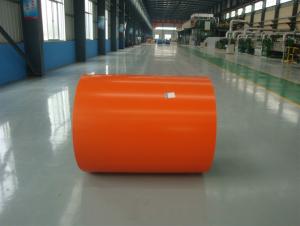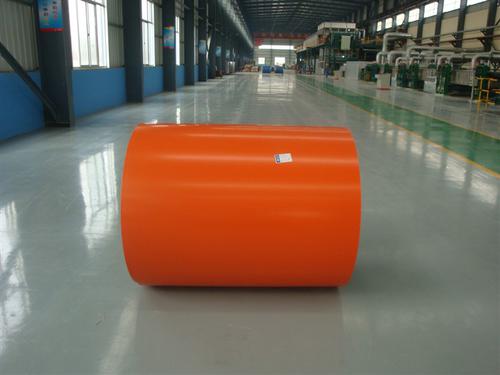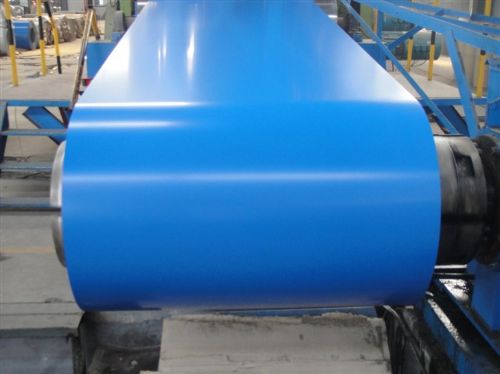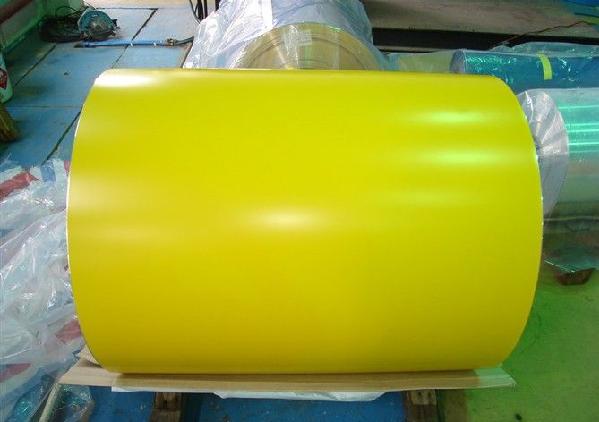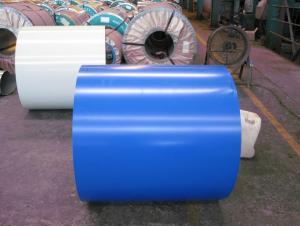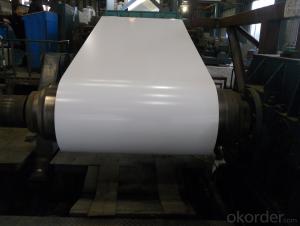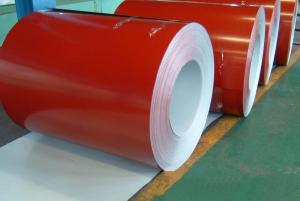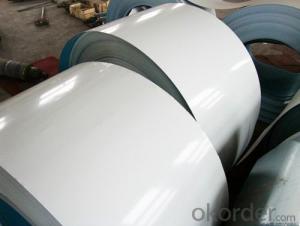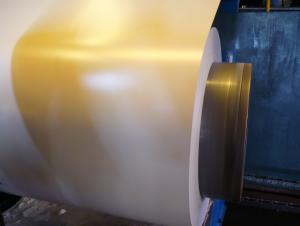PRE-PAINTED ALUZINC STEEL COIL
- Loading Port:
- Tianjin
- Payment Terms:
- TT OR LC
- Min Order Qty:
- -
- Supply Capability:
- 12000 m.t./month
OKorder Service Pledge
Quality Product, Order Online Tracking, Timely Delivery
OKorder Financial Service
Credit Rating, Credit Services, Credit Purchasing
You Might Also Like
THICKNESS:0.18mm-1.5mm
WIDTH:900mm-1250mm
COATING MASS:AZ30-AZ180
PAINT:PE、HP、HDP、PVDF、SMP、MATT、PVDF
COLOR:RAL Scale
COIL INNER DIAMETER:508mm/610mm
COIL WEIGHT:3mt-7mt
BASE MATERIAL:Hot-dip Aluzinc Steel
- Q: I have never owned a non-stainless steel chef's knife and have been looking at some to buy recently, but all of them have various degrees of wear and use. They say that the wear is normal for non-stainless steel knives, but how can I tell if it is too much wear, or if the blade is clean?
- Carbon steel chef's knives out perform stainless in every aspect except 1, care. You can't put them in a dishwasher. Wash, rinse and dry off. Do not keep them in a drawer filled with other kitchen stuff, rather, keep them in a cabinet or block. If it starts to rust you can use steel wool to clean them up, or fine grit sandpaper if you want to retain a fine finish. For your viewing pleasure, a chef's knife I forged from crane cable.
- Q: What are the industries that consume the most steel?
- I'm guessing manufacturing
- Q: I'm looking to buy the Milano Stiletto, and it uses 1045 steel. I was just wondering whether this will hold up and keep an edge.
- 1045 Steel
- Q: How are steel coils used in the production of metal cladding?
- Steel coils serve as the primary raw material for metal cladding production. Metal cladding involves covering a building's exterior with a layer of steel to enhance its durability, aesthetics, and insulation. To begin the manufacturing process, galvanized steel coils are used. These coils are made by coating steel with zinc to prevent corrosion. They are then unrolled and fed into a roll-forming machine, which shapes them into the desired profile for the cladding panels. Once the coils are formed, they undergo various processes to improve their properties. These processes include cutting, perforating, and embossing to create patterns, textures, or openings in the panels. Additional protective layers, such as paint or powder coating, can also be applied to enhance corrosion resistance and appearance. The shaped and processed coils are assembled into metal cladding panels. These panels interlock seamlessly to create an appealing exterior for buildings. They can be attached to the building's structure using screws, clips, or adhesives. Using steel coils in metal cladding production offers several advantages. Steel is a strong and durable material, making it suitable for exterior applications that require resistance to weathering, impact, and other environmental factors. It also allows for a wide range of design options and customization. In summary, steel coils are essential in the production of metal cladding. They serve as the raw material, which is shaped, processed, and assembled into panels that enhance buildings' protection, aesthetics, and insulation properties.
- Q: I want to make a lap steel guitar in my wood tech class. can anyone give me a link to a video or site that has steps on how to build one.
- Steel guitars have cables attached to foot pedals to change the sound. I don't know how this would work with the top resting on your lap.
- Q: Can steel coils be customized in terms of size and thickness?
- Yes, steel coils can be customized in terms of size and thickness. Manufacturers can produce steel coils in various dimensions and thicknesses to meet specific requirements and applications.
- Q: days. Use your knowledge of the corrosion of steel and aluminum to predict how they would look different after a week exposed to rainy weather. Explain your prediction.
- Steel rusts, aluminum doesn't so the steel can would be rusty and the aluminum can would not.
- Q: I just want regular steel, not stainless steel.
- Iron is the primary ingredient in steel. All Steel is an alloy by definition. Stainless steels are alloys that resist corrosion. There are dozens of alloys of steel. Many stainless steels are not magnetic. If a magnet won't stick to it it is very likely to be a stainless steel but that is not true for all stainless steels. You really do need to be more specific as to what you want and why. There are too many to chose from.
- Q: density of mild steel (MS) is 7850 KG per metre cube , but i want to know the density of stainless steel
- Stainless steels are the most dense, coming in at 8000 kg/m3. Though the densities vary, The answer is 8000 kg/m3. 301 stainless density values seem to vary according to the supplier data sheets, from 7.88 g/cc, (AK Steel) to 8.03 g/cc, (Allegheny Ludlum)
- Q: How are steel coils inspected for weldability?
- A series of comprehensive tests and examinations are carried out to inspect the weldability of steel coils. The main objective of this inspection is to assess the quality and suitability of the steel coils for welding purposes. To begin with, a visual inspection is conducted to identify any visual defects or irregularities present on the surface of the coils. This includes checking for factors such as surface roughness, cracks, scratches, or any other imperfections that might affect the weldability. Following this, destructive testing methods, such as tensile testing and impact testing, are performed. Tensile testing measures the strength and ductility of the steel, ensuring that it meets the required mechanical properties for welding. Impact testing evaluates the steel's ability to resist brittle fracture, which is crucial in determining its weldability. In addition, non-destructive testing techniques like ultrasonic testing (UT) and magnetic particle inspection (MPI) are employed to detect any internal defects or discontinuities. UT utilizes high-frequency sound waves to identify hidden flaws within the steel, while MPI uses magnetic particles to identify defects on or near the surface. Moreover, chemical analysis is carried out to determine the composition of the steel and ensure that it meets the required specifications for welding. This analysis involves checking the levels of carbon, manganese, sulfur, and other elements that may impact the weldability and overall performance of the steel. Furthermore, weldability testing is performed to evaluate how the steel responds to welding processes. This involves conducting various welding trials using different techniques and parameters to assess the steel's behavior during welding, including its susceptibility to cracking, distortion, or other welding-related issues. In conclusion, the inspection of steel coils for weldability is a comprehensive process that involves visual inspection, destructive testing, non-destructive testing, chemical analysis, and weldability testing. Through these thorough inspections, manufacturers can ensure that the steel coils meet the required standards and are suitable for welding applications.
Send your message to us
PRE-PAINTED ALUZINC STEEL COIL
- Loading Port:
- Tianjin
- Payment Terms:
- TT OR LC
- Min Order Qty:
- -
- Supply Capability:
- 12000 m.t./month
OKorder Service Pledge
Quality Product, Order Online Tracking, Timely Delivery
OKorder Financial Service
Credit Rating, Credit Services, Credit Purchasing
Similar products
Hot products
Hot Searches
Related keywords
